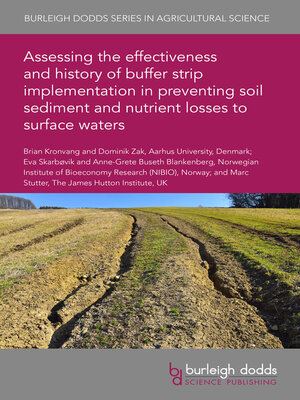Assessing the Effectiveness and History of Buffer Strip Implementation in Preventing Soil Sediment and Nutrient Losses to Surface Waters
ebook ∣ Burleigh Dodds Series in Agricultural Science
By Professor Brian Kronvang

Sign up to save your library
With an OverDrive account, you can save your favorite libraries for at-a-glance information about availability. Find out more about OverDrive accounts.
Find this title in Libby, the library reading app by OverDrive.



Search for a digital library with this title
Title found at these libraries:
| Library Name | Distance |
|---|---|
| Loading... |
Buffer strips are one of the most widely utilised mitigation measures to reduce sediment and nutrient transfer from soil erosion and surface runoff on fields to neighbouring surface waters. Their effectiveness in terms of retaining sediment and nutrients has been documented by numerous experimental studies, with buffer strip width and soil type the most important factors influencing their performance. A recent review of more than 270 experimental studies on the effectiveness of buffer strips showed an average sediment retention amounting to 72%. Similarly, the average retention for total phosphorus and total nitrogen in buffer strips amounted to 75% and 32%, respectively. Newly developed engineered buffer strips have proven to be increasingly efficient at retaining dissolved nutrients transported via tile drainage water. This chapter looks at the history of buffer strips in countries including Denmark, Scotland and Norway, offering valuable insights in to how to improve the uptake of buffer strips.







